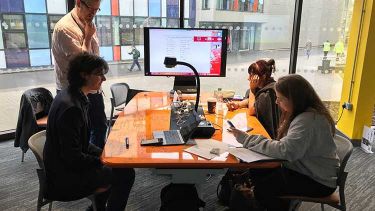
Source:
iStock

Online assets are as important as physical archives when storing and managing complex research and other vital data
When it recently emerged that important emails, documents and design drawings relating to the Grenfell Tower refurbishment had been lost forever after being wiped from a laptop, it seemed unbelievable. But now, as the Covid-19 pandemic continues, sound digital records management is more important than ever.
“We need to be clear what’s in the scope of public records and secure those records now,” says William Kilbride, executive director of the Digital Preservation Coalition, a membership organisation that aims to raise awareness of the importance of organisations’ digital legacy. Decisions are being made on a daily basis, and any future inquiry into how policies were implemented will need to be able to draw on anything from emails to complex scientific research data. But as many education institutions will recognise, electronic records can be complicated and exist in many formats, and the lines of responsibility for them are often unclear.
Recognising this challenge, Jisc, the UK education and research technology solutions not-for-profit, has recently launched a service known as Preservation, a fully managed software-as-a-service platform that can help academic institutions manage, store and preserve digital research output. The service works between universities’ existing systems and workflows to help records managers curate and back-up data in a way that enables them to find and access digital assets in the future. Liz Bal, Jisc’s director of open research services, explains: “Preservation makes copies of digital objects and automates checks to ensure they have not been changed or damaged. They can be converted into newer formats with newer technology as it evolves. It’s important for all institutions to preserve and future-proof the use of their digital assets and, for research, this goes hand in hand with the integrity and reproducibility of data, so others can build on their work.”
Interest in digital preservation has not just come from research teams but also from different departmental stakeholders who are keen on securing digital assets, she adds.
St George’s, University of London was involved in the pilot of the Preservation tool. As a specialist health institution, the university has data obligations that are complex, including clinical trial data that needs to be kept for many years.
“The challenge is how we make data accessible for the long term,” explains Michelle Harricharan, its research data support manager. “Software changes, so if we want to go back to the data, we might not be able to open it if it’s in an obsolete format. Or if we migrate to another format, there may be a chance that we lose data, or some of its formatting information.” Furthermore, as St George’s processes greater volumes of digital data for its research analysis, the research software it uses to analyse the data can change over time, making it difficult to replicate the software environment over an extended period.
The Preservation system functions like a digital archive with “containers” that can be applied to different teams or departments. Metadata can be applied to the records so anyone who accesses it can see who owns the data, why it has been retained and for how long. The system tells the university when a format is becoming obsolete and the data owner can then decide how to proceed – it keeps a copy of the original digital item, too, for future reference.
Kirsten Hylan, records manager at St George’s, says: “Lots of potential responses to this issue are resource intensive or manual – at this stage Jisc’s digital preservation offering feels as though it will be a solution. We can apply retention rules to records, add relevant security and determine who can access them.”
The sudden shift to online teaching brought about by the pandemic has “for me, focused people’s minds on working in a digital environment and managing electronic records,” says Hylan, as well as prompted considerations around how the university manages this output.
Understanding the importance of good digital records management is crucial. Many institutions manage special physical collections or archives but assume digital record keeping will be managed through back-up and repository systems.
Kilbride argues that we need to get better at articulating the value of data, so organisations will invest more in preserving it properly. “Data is an intangible asset so doesn’t appear on the university balance sheet, yet companies like Facebook and Google’s entire value is based on data. This is where we need to raise our game.”
Find out more about Jisc’s Preservation tool.
Jisc is also running a free webinar about preservation for universities, colleges and research institutions. What is digital preservation and should you be worried? will take place on 5 November 2020.
















